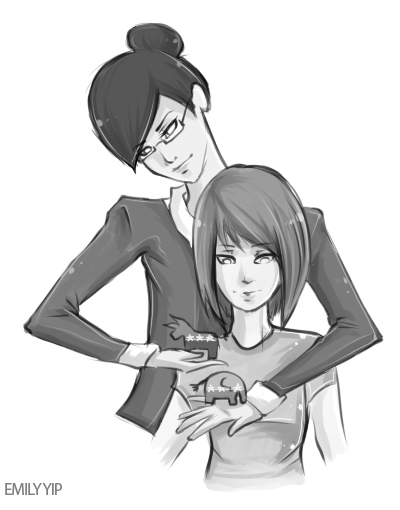
Teachers can have a significant influence on how students form opinions about the world. While the vast majority are not dictators bent on brainwashing their students with their own political views, some do discuss political issues to varying degrees.
English teacher James Daniel occasionally incorporates politics into his classes, either as a humorous sidebar or in the context of course material such as existentialism.
“You’d have to be pretty thick to be my student and not realize which way I swing. [But] I’m not trying to persuade anyone to share those beliefs,” Daniel says.
On the other hand, history teacher Doug McGlashan says, “I seldom talk about my views, either in class or not in class. Definitely not in class.”
Senior Aaron Oppenheim says that he is exposed to political discussion “pretty much every lesson,” particularly in Government class but throughout high school. “Teachers, especially in history classes, usually input their own opinions into the lesson. It’s the easiest way to get their point across.”
“Politics seems to come up a lot, even when we’re not in a history class,” says Oppenheim. “And since we’re in the Bay Area, there seems to be a strong liberal bias.”
Sophomore Clayton Nagle is exposed to politics occasionally in history, “but not intensely [or] for any real period of time,” he says.
“For the [gubernatorial] debate, as an example, when Jerry Brown won, the students were talking before class about it and history teacher Ron Berggren added a few of his opinions, but nothing negative about Whitman and nothing overly persuasive,” says Nagle. “My teachers try to remain pretty unbiased if they bring up political issues at all.”
Teachers also have contrasting approaches to the role of politics in classrooms.
History teacher Jim Smith discusses current events in his class in the context of his history lessons, such as elections and “issues of government response to problems,” he says.
McGlashan instead focuses on reinforcing the historical context that students need in order to evaluate politics, rather than the current issues themselves. “I don’t get the feeling that many [of my students] read the news a lot. Some do,” says McGlashan. “I think most juniors in high school don’t know a lot about U.S. history or U.S. politics.”
“I see my role as giving them a strong foundation in U.S. history so they have a basis for evaluating [political issues],” says McGlashan, “so in government class they know the background and can enjoy wrestling with current issues.”
Daniel says, “I think if someone’s teaching government or history, it’s more important for them to appear more impartial.” While he does make personal comments, he is mindful of his target audience, taking care not to offend those who disagree with him.
“We live in the Bay Area, and it’s likely that most people here will agree with you,” Daniel says. “[If I was teaching elsewhere] I wouldn’t be as quick to make fun of Sarah Palin. You just have to be careful.”
Smith says, “If you’re a social studies teacher, you really have to discuss politics. And you really need to make everybody’s ideas respected. “I occasionally make my own views heard, [but] usually toward the end. I generally try to keep it without my opinion so kids are free to share their opinions.”
Smith believes that political discussion is valuable. “It’s a social studies class. Where else do they have an opportunity to discuss such things?”
Oppenheim also sees value in his teachers discussing politics, even if it may influence his opinions. He says, “I think it helps students really think about an issue, even if they don’t agree with it. Plus, it also gives the student a lesson that might not necessarily be in the textbook, and it provides a real world example.”
Teachers differ in how much they permit their own opinions, and students differ in how receptive they are to them. But as a whole, the school forms a healthy environment for developing minds and developing viewpoints.




